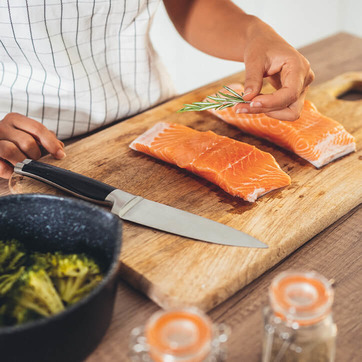Because the body cannot produce these unsaturated fatty acids itself, we have to obtain these in our food. We should prepare a fish meal with cold water fish two to three times a week.

Im Folgenden geben wir Ihnen einen Überblick über die Omega-3-Fettsäuregehalte (EPA/DHA) von Kaltwasserfischen:
- Salmon – 1.8%
- Anchovies – 1.7%
- Sardines – 1.4%
- Herring – 1.2%
- Mackerel – 1%
- Tuna – 0.7%
How do omega-3 fatty acids get into fish?
The actual source of the long-chain omega-3 fatty acids EPA and DHA are specific microalgae that are eaten by the fish via the food chain. Plankton in Arctic waters, in particular, is rich in omega-3 fatty acids. This is crucial for the cold-water fish, because they can only survive in the very cold waters because omega-3 fatty acids are incorporated into the cell membranes. This allows them to remain flexible even at low temperatures. Accordingly, fewer omega-3 fatty acids are found in fish that live in oceans in warmer regions or in rivers and lakes.
Why cold-water oily fish and not lean fish?
Fish that live in cold or Arctic waters in particular contain plenty of omega-3 fatty acids. In addition, the fatter a fish is, the more omega-3 fatty acids it contains. Pollack and trout live in warmer waters and therefore need less “protection” in the form of omega-3 fatty acids. So they contain a smaller amount. Furthermore, they are lean fish, which means that this fact also explains the lower content of omega-3 fatty acids.
